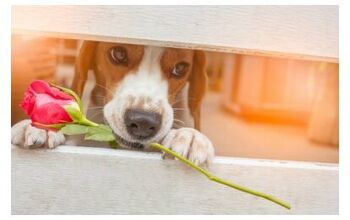The litterbox is often an afterthought for many of us, something that’s obviously necessary, but we overlook that it’s a cornerstone to our cat’s physical and mental well-being. Your cat’s litter box is important, including every detail that goes into it!A positive litter box experience is far more significant than simply a place to do their business. It directly impacts their hygiene, comfort, and even their overall behavior. Just as we appreciate a clean and comfortable bathroom, our cats have their own standards. Have you ever walked into a public washroom only to feel like you should just back away slowly?When setting up your cat’s litter box, there are several factors you should consider, one of which includes the type of litter. It’s easy to assume all litters are created equal, but the reality is that a world of different options, materials, and formulations exist, each with its own pros and cons.This guide will explain the differences between the many types of cat litter and help you find the perfect match for your cat to ensure a happy and accident-free home.Why Does Litter Choice Matter So Much?Choosing the right litter for your cat goes beyond simply providing a place to do their business. From a hygiene and health perspective, the right litter is an essential piece of the puzzle in providing a clean and healthy environment both for your cat and the rest of the household. The right litter choice will efficiently absorb moisture, limiting the growth of bacteria, preventing tracking through your home, and reducing unpleasant odors.Beyond the practicalities of basic cleanliness, there are behavioral impacts of your choices relating to your cat’s litter box. Cats can be surprisingly picky about the finer details of their litter, including the texture and the scent. Providing them with litter that doesn’t fit their personal preferences can lead to litter box avoidance and accidents in the home.For environmentally-conscious cat parents, it’s also worth noting that each litter option carries a different environmental footprint. From production to disposal, they each affect your impact on the environment differently.Finally, let’s not forget your convenience. While your cat’s happiness is the first priority, if you are down to a few options and one works better for you and your lifestyle, it makes sense to go in that direction. After all, a litter that’s difficult to manage or pushes the boundaries of your budget may not be an ideal long-term solution, regardless of how your cat feels about it.Exploring the Different Types of Cat LitterThere are a surprising number of different cat litter materials and formulations to choose from. Standing in your local pet store, looking at all the options, you may be feeling overwhelmed. Let’s look at the nuances of each type, including its pros and cons, to help you better understand the impact on your cat’s comfort and your own convenience, making it easier than ever to choose the best cat litter for your home.Clay Litter The best-known and most widely used liter solution, clay litter is a popular choice among cat parents. It’s primarily available in two types: clumping and non-clumping. Clumping clay litter is made from bentonite clay, a material with an incredible ability to absorb moisture and form solid, scoopable clumps when exposed to urine and feces. This clumping action makes daily cleaning of the box much easier, as you can easily remove the soiled portions while leaving the clean litter behind for future bathroom breaks. This makes it more budget-friendly than other solutions, as you only have to throw away the used litter. Non-clumping clay litter is similar in that it is made from clay, but while it still absorbs the moisture, the clay does not form clumps. This can make cleanup a little more challenging as there are no easy clumps to remove. However, for young kittens, cats with PICA, or homes with dogs who may get into the box, the lack of clumping makes it a safer option that is less likely to cause a life-threatening blockage if consumed. It's worth noting that when choosing a clay litter, there are different textures, ranging from fine, sand-like litter to coarser particles. Some cats will have strong preferences related to texture, so pay attention to their digging and covering habits. Another variation that could turn your cat off is scented litter. While these scents may help mask odors, we must remember that our cats have a stronger sense of smell and are more sensitive to scents like these. Feeling overwhelmed by it, they may avoid the litter box entirely, leading to more accidents around the house. While clay litters are widely available and generally more cost-effective, they have some drawbacks. These litters can be quite dusty, which can be a concern for cats or cat parents with respiratory sensitivities. They are also generally heavier to carry. Finally, they are not biodegradable, meaning they contribute to landfill waste. Silica Gel (Crystal) Litter This type of litter is composed of small silica gel beads that act like tiny sponges, absorbing a surprising amount of litter while trapping odors. For this reason, one significant advantage of silica gel litter is its ability to control or eliminate odor, often doing so better than any clay litter product. It’s also incredibly lightweight, making it easy to carry, handle, and pour. Because the litter absorbs moisture so effectively, you can go longer between full litter box changes. While it may seem that fewer litter box changes would translate to considerable cost savings, this, unfortunately, isn’t the case due to the higher upfront costs. Some cats may also find the texture of the crystals or the slight crunching sound they make when stepped on to be uncomfortable or bothersome, which could turn them off using the box. My overly sensitive cat Pippen refuses to step on any form of silica gel litters I have tried in the past.

























